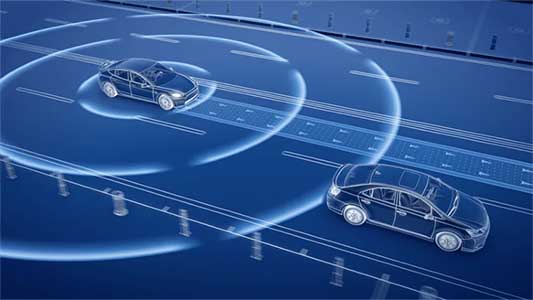The automotive industry is undergoing a rapid transformation, propelled by electrification, digitalization, and regulatory mandates for safety and emissions. At the heart of this shift lies a small yet powerful technology: automotive pressure sensors. These devices, critical in monitoring and regulating multiple vehicle systems, are becoming indispensable in passenger cars, commercial fleets, and electric vehicles.
The global automotive pressure sensors market is calculated at USD 13.53 million in 2025 and is projected to reach USD 20.03 million by 2034, expanding at a CAGR of 4.67% from 2024 to 2034. Asia Pacific leads the market, while North America is poised to grow at a significant rate during the forecast period.
Why Pressure Sensors Matter More Than Ever
Pressure sensors are no longer just components; they are essential guardians of safety, performance, and compliance. These sensors support critical applications including tire pressure monitoring systems (TPMS), engine management, braking systems, and fuel regulation. With governments enforcing strict emission norms, pressure sensors have become central to optimizing combustion, reducing emissions, and improving fuel efficiency.
The rise of electric vehicles (EVs) has further fueled demand. EVs rely on pressure sensors for battery management, thermal control, and system safety. Similarly, the integration of Advanced Driver Assistance Systems (ADAS) and the push toward autonomous vehicles have amplified the role of pressure sensors in delivering real-time monitoring and control.
Artificial Intelligence: Adding Intelligence to Pressure Sensors
Artificial intelligence (AI) is redefining the capabilities of pressure sensors. By integrating AI-driven algorithms and machine learning, sensors can now analyze data with precision, detect anomalies, and enable predictive maintenance. This ensures that potential failures are addressed before they escalate, reducing downtime and enhancing vehicle reliability.
In advanced applications like engine management, TPMS, and brake control, AI-powered sensors provide real-time responses for improved safety and efficiency. Their role is especially crucial in autonomous driving, where complex data streams demand instant processing.
Example: In March 2023, STMicroelectronics launched an AI-enabled accelerometer sensor, designed for maximum accuracy and gesture detection an innovation showcasing the growing fusion of AI and automotive sensing.
Tire Pressure Monitoring Systems (TPMS): A Market Catalyst
TPMS has emerged as one of the most critical drivers of the automotive pressure sensors market. These systems alert drivers when tire pressure falls below recommended levels, helping prevent accidents, improve fuel efficiency, and extend tire life.
- Regulatory Push: Governments in North America, Europe, and Asia have mandated TPMS in new vehicles. The U.S. TREAD Act (2007) is one such regulation that has accelerated adoption.
- Consumer Awareness: Rising demand for safer, fuel-efficient cars has made TPMS a must-have feature.
Example: In September 2024, Goodyear launched Goodyear TPMS Connect, a software that integrates with TPMS hardware to monitor tire conditions more effectively
Challenges Hindering Market Growth
While the future looks promising, the market faces obstacles:
- High Production Costs: Advanced sensor technologies increase vehicle costs, posing a challenge in price-sensitive markets.
- Accuracy & Durability Issues: Sensors must withstand extreme automotive environments, complicating development.
- Raw Material Volatility: Semiconductor price fluctuations affect production costs.
- Slow Adoption in Developing Regions: Limited awareness and infrastructure constrain growth potential.
ADAS: Unlocking Opportunities Ahead
The rapid adoption of Advanced Driver Assistance Systems (ADAS) represents a game-changing opportunity. Features such as electronic stability control, adaptive cruise control, and lane-keeping assist depend heavily on accurate sensor data. Pressure sensors play a vital role in ensuring these systems function seamlessly.
With regulators mandating ADAS in new vehicles and consumers demanding smarter, safer cars, the integration of pressure sensors is only set to accelerate. Their ability to enable predictive maintenance and connected vehicle functions makes them indispensable to the future of mobility.
Sensor Type Insights: Position Sensors Lead the Way
Among all sensor types, the position sensor segment holds the largest market share. These sensors complement pressure sensors by monitoring throttle valves, brake pedals, steering systems, and transmission controls.
- Engine Management: Position and pressure sensors work together to regulate air-fuel ratios and optimize combustion.
- Emission Compliance: Their role is vital in meeting global environmental standards.
- ADAS Integration: Position sensors enhance adaptive cruise control, braking, and lane assist systems.
Example: In October 2023, TDK launched its 3D HAL technology-based position sensor, offering highly accurate positional measurements for automotive applications.
Vehicle Type Insights: Passenger Cars Dominate
Passenger cars remain the backbone of the automotive pressure sensors market, contributing the largest revenue share.
- Engine Management Systems: Pressure sensors optimize combustion and reduce emissions.
- ADAS Integration: Passenger cars increasingly feature TPMS, adaptive cruise control, and stability systems.
- EV Expansion: Battery management and thermal regulation in EVs further boost demand.
According to the IEA, global passenger car sales stood at 19.5 million in 2020 and 16.1 million in 2022, showcasing the sector’s importance despite short-term fluctuations.
Regional Insights: Asia Pacific Leads, North America Rises
- Asia Pacific: The region dominates the market, driven by EV adoption, government incentives, and a booming aftermarket. Countries like China, India, and Japan are leading this surge, supported by consumer demand for safety and fuel efficiency.
- North America: Expected to grow significantly, backed by strong automotive manufacturing, stringent EPA emission regulations, and rapid ADAS adoption.
- Europe: A consistent contributor, with focus on emissions and sustainable mobility.
- Latin America & Middle East & Africa: Gradual adoption supported by growing awareness of safety and efficiency.
Example: According to the IEA, China’s BEV sales surged from 2.6 million in 2019 to 16.1 million in 2023, reinforcing Asia Pacific’s leadership.
Conclusion: Small Sensors, Big Impact
The automotive pressure sensors market is on a steady upward trajectory, driven by electrification, safety regulations, ADAS adoption, and consumer demand for efficient vehicles. While challenges such as cost and raw material volatility remain, opportunities in EVs, AI integration, and predictive maintenance make this market a pivotal segment of the automotive industry.
From Goodyear’s TPMS innovations to TDK’s position sensors and STMicroelectronics’ AI-enabled devices, the landscape is rich with breakthroughs. By 2034, pressure sensors will not just monitor they will predict, optimize, and safeguard, making them central to the evolution of connected, autonomous, and sustainable mobility.
About the Author: Ajit Bansod is a skilled and research-driven analyst at Towards Automotive, with over 3 years of experience specializing in the intersection of automotive innovation and intelligent communication technologies.
Source: https://www.towardsautomotive.com/insights/automotive-pressure-sensors-market-sizing












